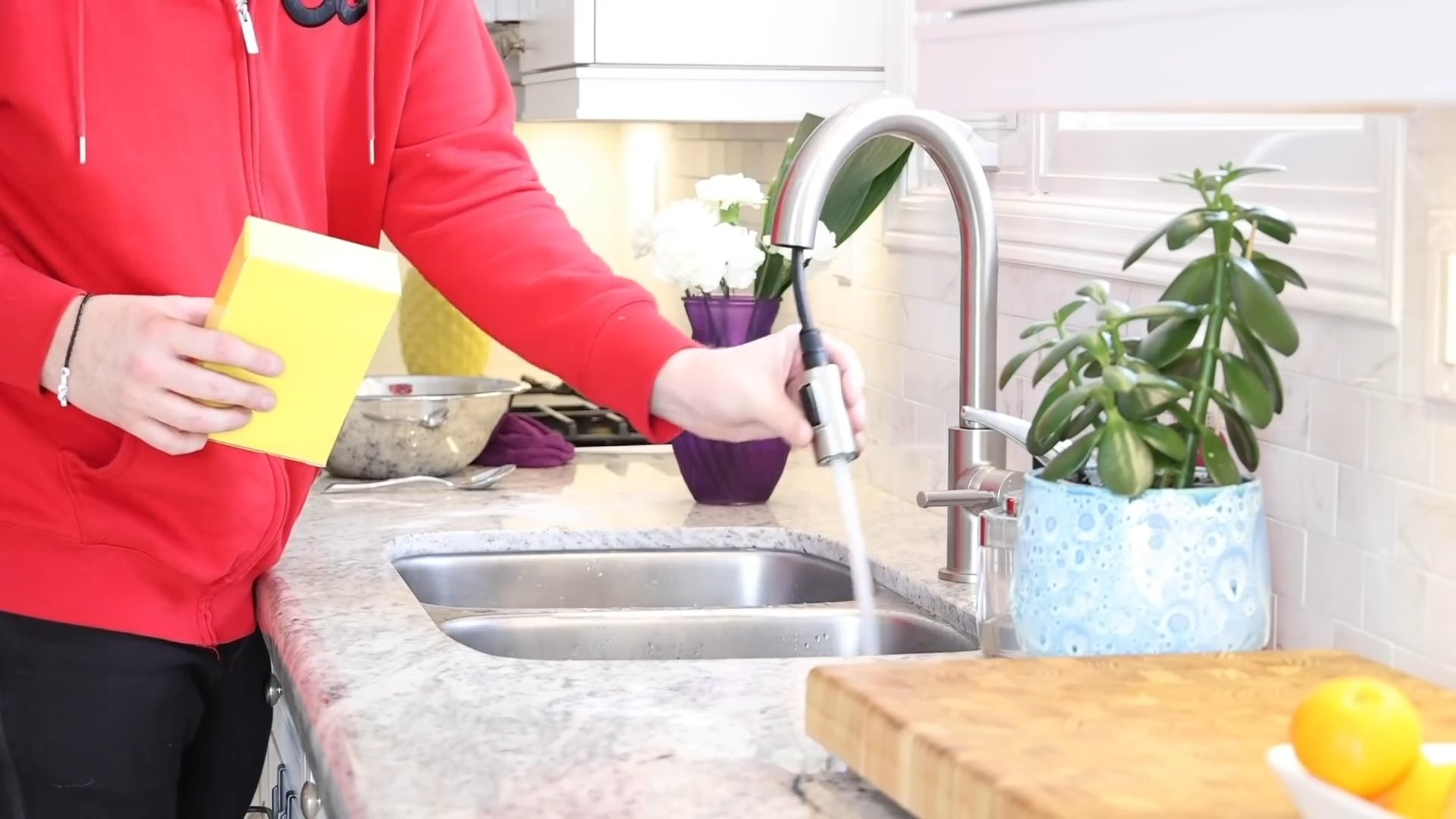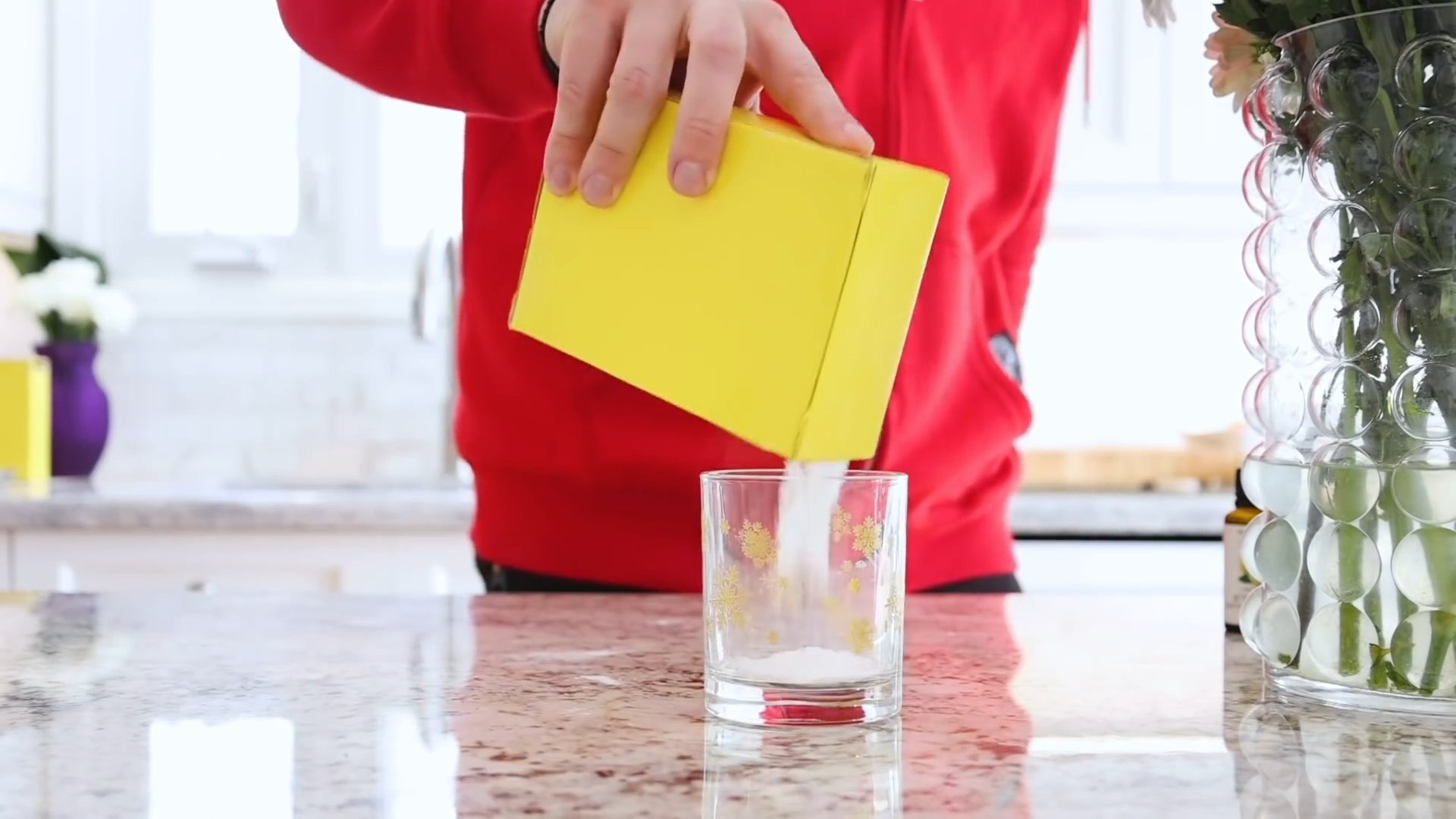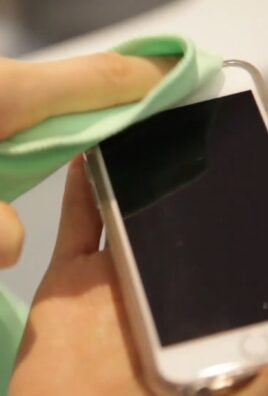Budget kitchen cleaning supplies – who knew they could be your secret weapon to a sparkling clean kitchen without breaking the bank? I’m always on the lookout for clever ways to save money, and when it comes to keeping my kitchen spotless, I’ve discovered some amazing DIY tricks that are both effective and incredibly affordable.
For generations, resourceful homemakers have relied on simple, readily available ingredients to maintain their homes. Think about it – our grandmothers didn’t have a cabinet full of specialized cleaning products! They used vinegar, baking soda, and lemon juice to tackle everything from greasy stovetops to grimy sinks. This tradition of resourcefulness is not only economical but also environmentally friendly, reducing our reliance on harsh chemicals.
Why do you need these DIY tricks and hacks? Because let’s face it, kitchen cleaning can be a chore, and those expensive cleaning products add up quickly. But with a few simple ingredients and a little elbow grease, you can achieve the same results for a fraction of the cost. Plus, you’ll know exactly what’s going into your cleaning solutions, avoiding potentially harmful chemicals. I’m excited to share my favorite budget kitchen cleaning supplies and DIY recipes that will transform your cleaning routine and leave your kitchen sparkling!

DIY Budget Kitchen Cleaning: Sparkling Clean Without Breaking the Bank
Hey there, fellow home enthusiasts! I’m always on the lookout for ways to save money and keep my kitchen sparkling clean. Store-bought cleaning products can be expensive, and honestly, sometimes the DIY versions work even better! Plus, you know exactly what’s going into them, which is a huge bonus. So, I’m going to share my favorite budget-friendly kitchen cleaning hacks that will leave your kitchen looking and smelling amazing without emptying your wallet.
Gather Your Supplies
Before we dive into the cleaning frenzy, let’s make sure we have everything we need. The beauty of these DIY solutions is that you probably already have most of these items in your pantry!
* **White Vinegar:** This is my go-to for almost everything! It’s a natural disinfectant, deodorizer, and degreaser.
* **Baking Soda:** Another powerhouse! Baking soda is a mild abrasive that’s perfect for scrubbing and removing stains.
* **Lemon Juice:** Not only does it smell fantastic, but lemon juice is also a natural cleaner and brightener.
* **Dish Soap:** A basic dish soap is essential for cutting through grease and grime.
* **Salt:** Coarse salt is great for scrubbing tough stains.
* **Olive Oil:** Yes, you read that right! Olive oil is surprisingly effective for polishing stainless steel.
* **Essential Oils (Optional):** For a pleasant scent, add a few drops of your favorite essential oils like lemon, lavender, or tea tree.
* **Spray Bottles:** You’ll need these to store and apply your homemade cleaners.
* **Microfiber Cloths:** These are my favorite for cleaning because they’re super absorbent and don’t leave streaks.
* **Sponges:** For scrubbing those tougher areas.
* **Old Toothbrush:** Perfect for getting into those hard-to-reach crevices.
* **Rubber Gloves:** To protect your hands, especially when dealing with vinegar.
* **Scrub Brush:** For tackling stubborn grime on floors or countertops.
DIY All-Purpose Kitchen Cleaner
This is my everyday cleaner that I use on countertops, stovetops, and even inside the refrigerator. It’s safe, effective, and smells great!
1. **Combine Ingredients:** In a spray bottle, mix equal parts white vinegar and water. For example, 1 cup of vinegar and 1 cup of water.
2. **Add Essential Oils (Optional):** If you want a pleasant scent, add 10-15 drops of your favorite essential oil. Lemon and tea tree are great choices for their antibacterial properties.
3. **Shake Well:** Make sure everything is thoroughly mixed.
4. **Spray and Wipe:** Spray the cleaner onto the surface you want to clean and wipe with a microfiber cloth. For tougher stains, let the cleaner sit for a few minutes before wiping.
DIY Oven Cleaner
Oven cleaning is the worst, right? But this DIY method is surprisingly effective and doesn’t involve harsh chemicals.
1. **Prepare the Oven:** Remove the oven racks and any loose debris.
2. **Make a Baking Soda Paste:** In a bowl, mix 1/2 cup of baking soda with enough water to form a thick paste.
3. **Apply the Paste:** Spread the paste all over the inside of your oven, avoiding the heating elements. Be generous with the application, especially on stubborn stains.
4. **Let it Sit:** This is the key! Let the paste sit for at least 12 hours, or even overnight. The longer it sits, the easier it will be to remove the grime.
5. **Wipe Away the Paste:** After the paste has sat, use a damp sponge or cloth to wipe away as much of the paste as possible. You might need to use a little elbow grease for the tougher spots.
6. **Spray with Vinegar:** Fill a spray bottle with white vinegar and spray the inside of the oven. The vinegar will react with the remaining baking soda, creating a fizzing action that helps to loosen any remaining grime.
7. **Wipe Again:** Wipe away the vinegar and any remaining residue with a clean, damp cloth.
8. **Replace the Racks:** Once the oven is completely clean and dry, replace the racks.
DIY Dishwasher Cleaner
Keep your dishwasher running smoothly and smelling fresh with this simple DIY cleaner.
1. **Remove Food Debris:** Make sure your dishwasher is empty and free of any large food particles.
2. **Vinegar Rinse:** Place a dishwasher-safe cup or bowl filled with 1 cup of white vinegar on the top rack of the dishwasher.
3. **Run a Hot Cycle:** Run the dishwasher on a hot cycle without any detergent. The vinegar will help to dissolve grease, remove mineral buildup, and deodorize the dishwasher.
4. **Baking Soda Boost (Optional):** For extra cleaning power, sprinkle 1 cup of baking soda on the bottom of the dishwasher after the vinegar cycle. Let it sit overnight, then run another short, hot cycle.
DIY Garbage Disposal Cleaner and Deodorizer
A smelly garbage disposal can stink up your whole kitchen. Here’s how to keep it fresh.
1. **Ice and Salt:** Throw a handful of ice cubes and a tablespoon of coarse salt down the garbage disposal.
2. **Run Cold Water:** Turn on the cold water and run the disposal for about 30 seconds. The ice and salt will help to scrub the disposal blades and remove any built-up food particles.
3. **Lemon or Lime Peels:** For a fresh scent, toss a few lemon or lime peels down the disposal and run it with cold water. The citrus oils will help to deodorize the disposal.
4. **Baking Soda and Vinegar:** Alternatively, pour 1/2 cup of baking soda down the disposal, followed by 1 cup of white vinegar. Let it fizz for a few minutes, then flush with hot water.
DIY Stainless Steel Cleaner and Polisher
Keep your stainless steel appliances looking shiny and new with this simple two-step process.
1. **Clean with Vinegar:** Spray your stainless steel appliances with white vinegar and wipe them down with a microfiber cloth. This will remove fingerprints, smudges, and water spots.
2. **Polish with Olive Oil:** Pour a small amount of olive oil onto a clean microfiber cloth and buff the stainless steel in the direction of the grain. This will create a protective barrier and leave your appliances looking shiny and polished.
DIY Grout Cleaner
Grimey grout can make your whole kitchen look dirty. Here’s how to brighten it up.
1. **Baking Soda Paste:** Mix baking soda with a little water to form a thick paste.
2. **Apply to Grout:** Apply the paste to the grout lines and let it sit for a few minutes.
3. **Scrub with a Brush:** Use an old toothbrush or a grout brush to scrub the grout lines.
4. **Rinse with Water:** Rinse the grout with clean water and wipe dry with a cloth.
5. **Vinegar Boost (Optional):** For stubborn stains, spray the grout with white vinegar after scrubbing with baking soda. Let it fizz for a few minutes, then rinse with water.
DIY Kitchen Floor Cleaner
Keep your kitchen floors sparkling clean with this simple and effective DIY cleaner.
1. **Sweep or Vacuum:** Start by sweeping or vacuuming the floor to remove any loose dirt and debris.
2. **Mix the Cleaner:** In a bucket, mix 1/4 cup of white vinegar with 1 gallon of warm water. You can also add a few drops of your favorite essential oil for a pleasant scent.
3. **Mop the Floor:** Dip a mop into the cleaning solution and wring out the excess water. Mop the floor in sections, rinsing the mop frequently.
4. **Dry the Floor:** Allow the floor to air dry, or use a clean, dry mop or cloth to dry it.
DIY Cutting Board Cleaner and Sanitizer
Cutting boards can harbor bacteria, so it’s important to clean and sanitize them regularly.
1. **Wash with Soap and Water:** After each use, wash your cutting board with hot, soapy water.
2. **Sanitize with Vinegar:** Spray the cutting board with white vinegar and let it sit for a few minutes. The vinegar will help to kill bacteria.
3. **Lemon and Salt Scrub:** For extra cleaning power, sprinkle coarse salt on the cutting board and rub it with half a lemon. The salt will act as a mild abrasive, while the lemon juice will help to disinfect and deodorize the board.
4. **Rinse and Dry:** Rinse the cutting board thoroughly with water and let it air dry.
DIY Microwave Cleaner
Cleaning the microwave is a chore, but this method makes it super easy.
1. **Vinegar and Water Solution:** In a microwave-safe bowl, mix equal parts white vinegar and water (e.g., 1 cup of each).
2. **Microwave for 5 Minutes:** Place the bowl in the microwave and heat on high for 5 minutes. The steam will loosen any splattered food and grime.
3

Conclusion
So, there you have it! Mastering these budget kitchen cleaning supplies hacks isn’t just about saving money; it’s about reclaiming control over your cleaning routine and creating a healthier, happier home. We’ve shown you how to transform everyday items into powerful cleaning agents, proving that you don’t need a cabinet full of expensive, chemical-laden products to achieve a sparkling clean kitchen.
Think about the satisfaction of knowing exactly what’s going into your cleaning solutions. No more deciphering confusing ingredient lists or worrying about harsh chemicals lingering on your countertops. With these DIY methods, you’re opting for a safer, more sustainable approach to cleaning, one that’s gentle on your family, your pets, and the environment.
But the benefits extend beyond just health and safety. These budget-friendly solutions are incredibly effective. Vinegar cuts through grease like a charm, baking soda tackles stubborn stains, and lemon juice disinfects and deodorizes with a refreshing scent. You’ll be amazed at how well these simple ingredients perform, often outperforming their pricier counterparts.
Ready to take your kitchen cleaning to the next level?
Don’t be afraid to experiment and personalize these recipes to suit your specific needs and preferences. For example, if you’re dealing with particularly tough grease buildup, try adding a few drops of dish soap to your vinegar solution. Or, if you prefer a stronger scent, infuse your vinegar with citrus peels or herbs for a more aromatic cleaning experience. You can even create your own all-purpose cleaner by combining equal parts vinegar, water, and a few drops of your favorite essential oil. Lavender, tea tree, and eucalyptus are all excellent choices for their antibacterial and antifungal properties.
Consider creating a cleaning schedule to maintain a consistently clean kitchen. Designate specific days for tackling different tasks, such as wiping down countertops, cleaning the microwave, and scrubbing the sink. By breaking down the cleaning process into smaller, more manageable chunks, you’ll prevent dirt and grime from accumulating and make your cleaning routine less daunting.
And remember, cleaning doesn’t have to be a chore. Put on some music, enlist the help of your family, and turn it into a fun and engaging activity. You might be surprised at how much you enjoy the process, especially when you see the amazing results you can achieve with these simple, budget-friendly solutions.
We encourage you to try these DIY budget kitchen cleaning supplies hacks and see for yourself the difference they can make. Share your experiences with us in the comments below! Let us know which recipes worked best for you, any variations you tried, and any tips you have to share. We’re always eager to learn from our readers and build a community of eco-conscious cleaners. Together, we can create cleaner, healthier homes without breaking the bank. So, grab your vinegar, baking soda, and lemon juice, and let’s get cleaning!
Frequently Asked Questions (FAQ)
Q: Are these DIY cleaning solutions safe for all kitchen surfaces?
A: While most of these solutions are generally safe, it’s always a good idea to test them on a small, inconspicuous area first, especially on delicate surfaces like marble or granite. Avoid using vinegar on natural stone countertops, as it can etch the surface over time. Baking soda can be abrasive, so use it sparingly on easily scratched surfaces. When in doubt, consult the manufacturer’s instructions for your specific countertops or appliances.
Q: How long can I store these DIY cleaning solutions?
A: Most DIY cleaning solutions are best used within a few weeks to a month. Store them in airtight containers in a cool, dark place to prevent spoilage. Label each container clearly with the ingredients and date of preparation. Solutions containing fresh ingredients like lemon juice may have a shorter shelf life. If you notice any changes in color, odor, or consistency, discard the solution and make a fresh batch.
Q: Can I use essential oils in these cleaning solutions?
A: Yes, essential oils can be a great addition to DIY cleaning solutions, adding a pleasant scent and providing additional antibacterial and antifungal properties. However, it’s important to use them safely and responsibly. Always dilute essential oils properly before using them on surfaces, and avoid using them on surfaces that may come into contact with food. Some essential oils, such as citrus oils, can be photosensitive, so avoid using them on surfaces that will be exposed to direct sunlight.
Q: What are some alternatives to vinegar for cleaning?
A: If you’re not a fan of the smell of vinegar, there are several alternatives you can use for cleaning. Lemon juice is a great option for disinfecting and deodorizing, and it has a pleasant citrus scent. Hydrogen peroxide is another effective cleaner and disinfectant, but it should be used with caution as it can bleach some surfaces. Baking soda can be used as a gentle abrasive cleaner, and it’s also effective at absorbing odors.
Q: How can I clean my kitchen appliances with these DIY solutions?
A: These DIY solutions can be used to clean a variety of kitchen appliances. For example, you can clean your microwave by heating a mixture of vinegar and water inside for a few minutes, then wiping it down. You can clean your oven by making a paste of baking soda and water and applying it to the interior surfaces, then letting it sit overnight before scrubbing it clean. You can clean your dishwasher by running a cycle with a cup of vinegar in the top rack. Always unplug appliances before cleaning them, and avoid getting water inside electrical components.
Q: What’s the best way to clean a greasy stovetop?
A: A greasy stovetop can be a challenge to clean, but these DIY solutions can help. Start by sprinkling baking soda over the stovetop, then spray it with vinegar. Let the mixture fizz for a few minutes, then scrub with a sponge or brush. For stubborn grease, you may need to repeat the process or use a stronger abrasive cleaner. You can also try using a mixture of dish soap and hot water to cut through the grease.
Q: How do I get rid of stubborn stains on my kitchen countertops?
A: Stubborn stains on kitchen countertops can be frustrating, but there are several DIY solutions you can try. For coffee or tea stains, try making a paste of baking soda and water and applying it to the stain. Let it sit for a few minutes, then scrub gently. For grease stains, try using a mixture of dish soap and hot water. For more stubborn stains, you may need to use a commercial stain remover, but always test it on a small, inconspicuous area first.
Q: Are these DIY cleaning solutions environmentally friendly?
A: Yes, these DIY cleaning solutions are generally more environmentally friendly than commercial cleaning products. They use natural, biodegradable ingredients that are less likely to harm the environment. They also reduce the amount of plastic waste generated by disposable cleaning products. By making your own cleaning solutions, you can reduce your environmental footprint and contribute to a more sustainable lifestyle.
Q: Can I use these solutions to clean my refrigerator?
A: Absolutely! A mixture of baking soda and water is excellent for cleaning the interior of your refrigerator. It helps absorb odors and gently cleans surfaces without harsh chemicals. You can also use a diluted vinegar solution to wipe down shelves and drawers. Remember to remove all food items before cleaning and dry the surfaces thoroughly afterward. This is a great way to keep your refrigerator fresh and clean using budget kitchen cleaning supplies.





Leave a Comment